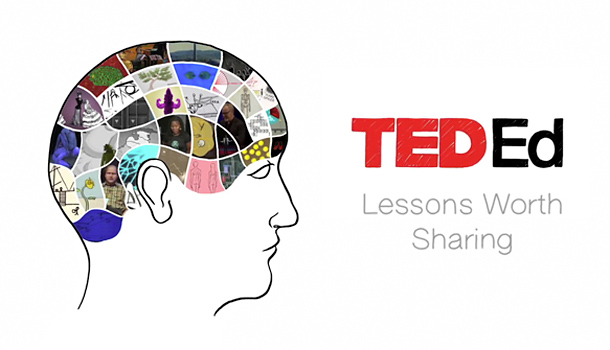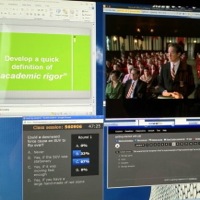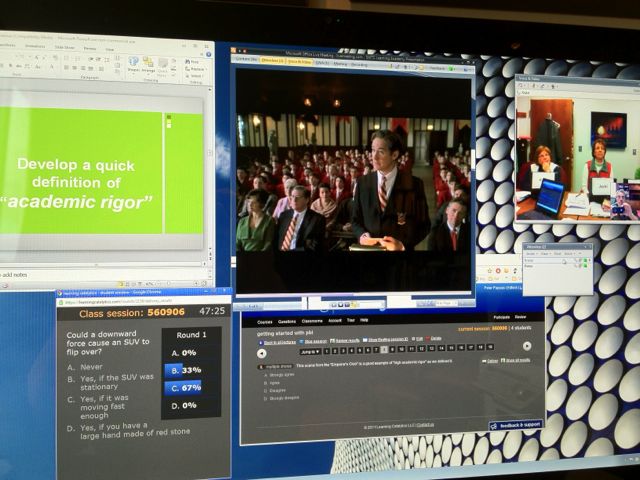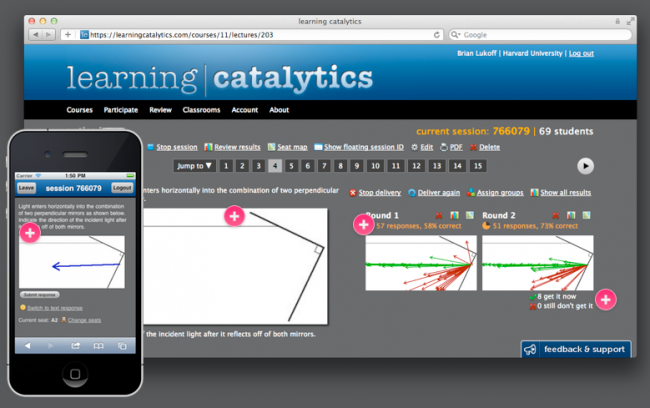This week Eastman Kodak filed for bankruptcy. Is there a lesson for educators about what happens when you lose touch with your customer?
First some personal background. I’m from Rochester New York – “The Kodak City.”
My dad worked at Building 29 – right at the heart of the business. Rotating through round-the-clock shifts, literally working in the dark, he mixed the chemicals that became film. One of Kodak’s many benefits, was a guaranteed job for your children when they reached college age. So in the late ’60’s, during my college summers, I worked at Kodak. The first two summers I worked on the Kodak railroad. Yes, Kodak ran it’s own track and trains within the 1,200 acre Kodak Park industrial complex. The summer before my senior year, I washed tour buses and drove the Kodak ambulance. If I remember correctly, I was making more than triple the minimum wage.
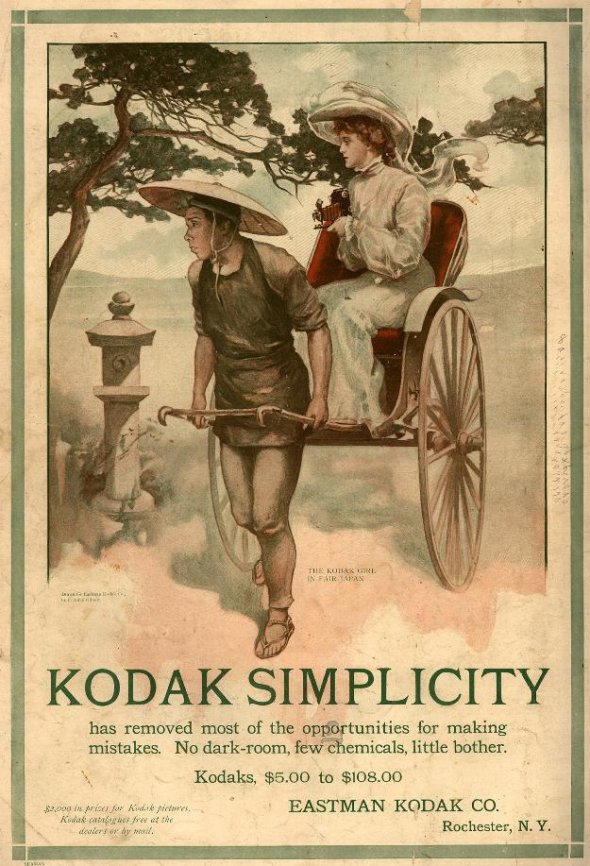
Of course, Kodak could afford to be generous to its workers (and extremely philanthropic to the Rochester community). It had a monopoly on the film market. George Eastman had transformed the complexities of the 19th century photographic “chemistry set” into something easy that anyone could do. He understood that his customers wanted simplicity. In the early days of the 20th century he pitched his cameras with the slogan “You push the button, and we do the rest.” (Users of the early Brownie cameras shipped their cameras to Rochester, where the film was taken out, processed and printed. Their reloaded camera and finished prints were shipped back to them.) Kodak continued to simplify with innovations, like drop-in film cartridges, but they always maintained control of all phases of the photographic process – dominating the markets for film, film processing, processing chemicals, and photographic paper.
At the same time the George Eastman popularized photography, compulsory public education brought education to the masses. Instruction was based on the notion that you could tell people what they needed to know. State education departments, publishers and teachers decided what was important and then delivered it to students via textbook and lectures. Perhaps the unstated slogan of that instructional model was “you listen and take the notes, and we do the rest.”
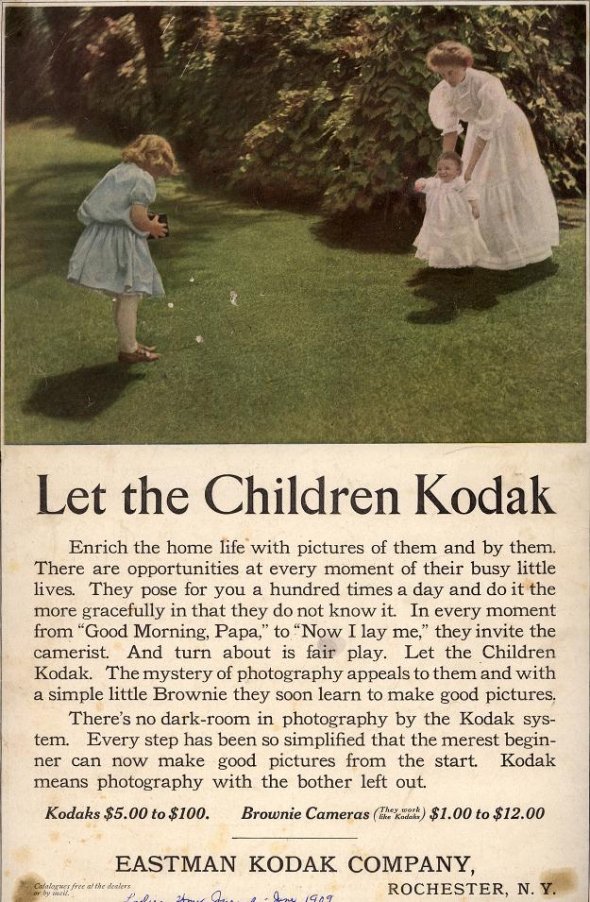
Ironically Kodak sowed the seeds of its own demise by pioneering digital photography in the mid 70’s. But the innovators at Kodak’s Apparatus Division Research Lab couldn’t make the case for “Film-less Photography” as it was called. “Why would anyone ever want to view his or her pictures on a TV? How would you store these images? What does an electronic photo album look like?” More on the first digital camera
Kodak leadership couldn’t accept challenges to their traditional photosensitive film model, so they licensed their digital patents to other companies who began creating the first digital cameras. Kodak’s leaders scoffed at the primitive digital images, and continued to milk their cash cow. The only thing to fear was losing market share to film competitors like Fuji Film.
At the core of Kodak’s eventual demise was the failure of the leadership to remain connected to their customers. They convinced themselves that the public would continue to want to buy film, load it into the camera, take a picture, drop the film off at the processor, and return later to pick up their photos. Easy to believe when you’re making money at every stage of that process. Leadership wouldn’t accept that their customers wanted greater control and functionality over the imaging process. Users would be willing to forgo the quality of the Kodachrome for the ability to do new things with images. Manipulate them, mash images up with other content, e-mail them off to someone, and perhaps never actually print a photo.
So do education leaders have something to learn from the bankruptcy of Kodak? Is their obsession with standardized achievement test data as misguided as Kodak tracking Fuji’s market share? Will innovative teachers get tired of explaining “the effectiveness of social media in the classroom” to their school board and leave the profession?
Has our educational leadership lost touch with their customers – the students? Given the growing array of cheap digital tools available to our students, will they passively wait to be told what, how, when and with whom to learn? Is the information flow of the traditional classroom (lecture, note-taking, test) as outmoded as taking your film to the drugstore for processing?
Given all the technologies available for students to direct their own learning, how much longer can the traditional school survive? When will worksheets go the way of Kodachrome?
Image credits: Emergence of Advertising in America On-Line Project
Kodak Simplicity
Kodak advertisement, 1905
Ad#K0431
Let the Children Kodak
Kodak advertisement, 1909
Ad #K0082
John W. Hartman Center for Sales
Advertising & Marketing History
David M. Rubenstein Rare Book & Manuscript Library
Duke University
Like this:
Like Loading...
